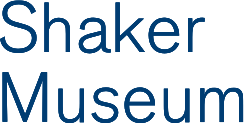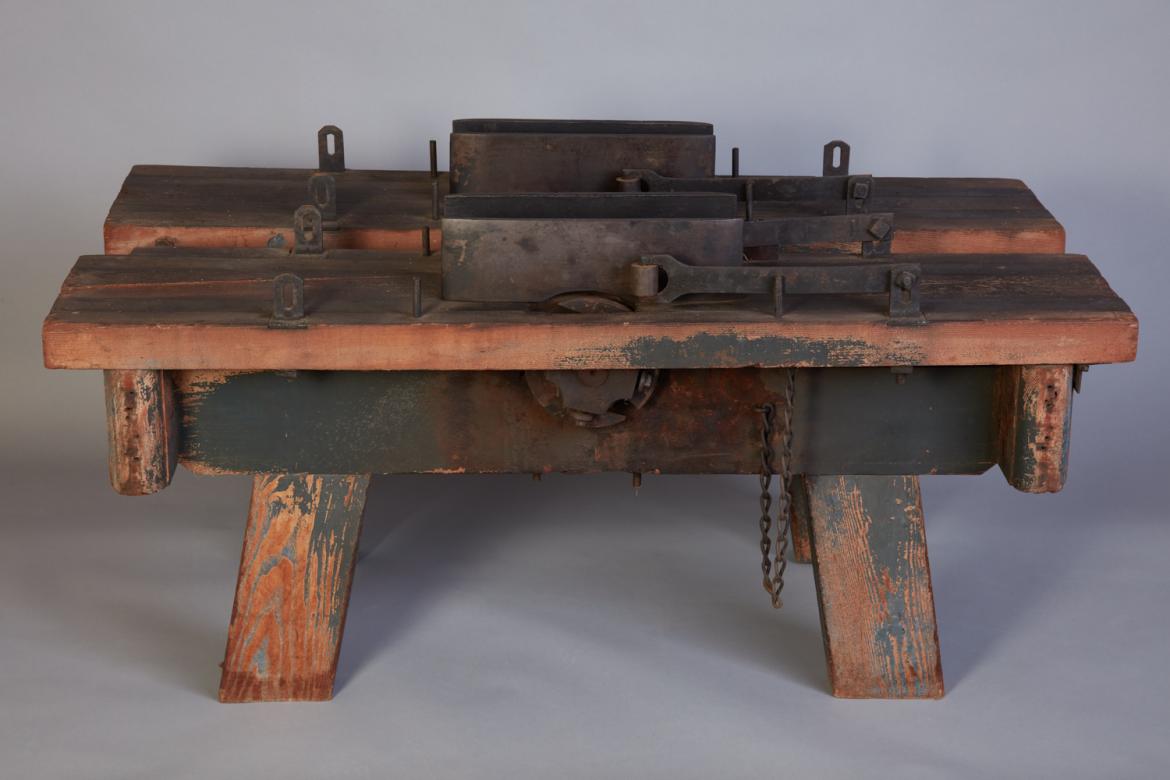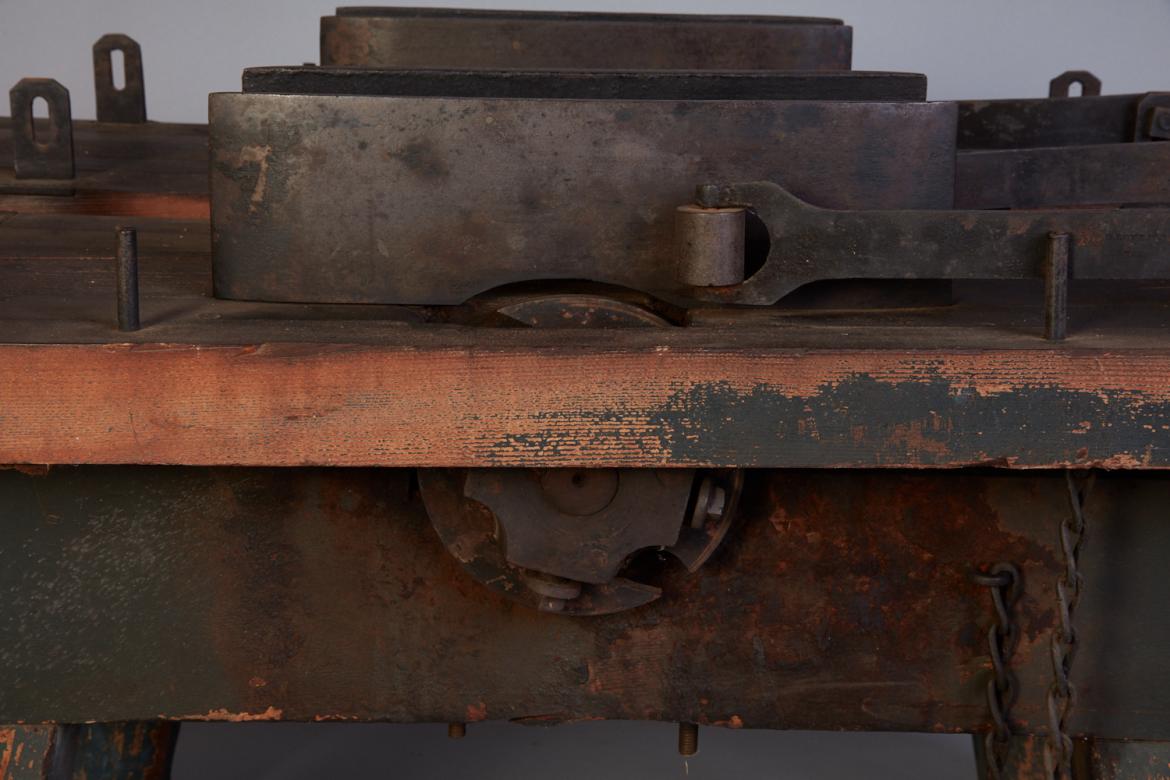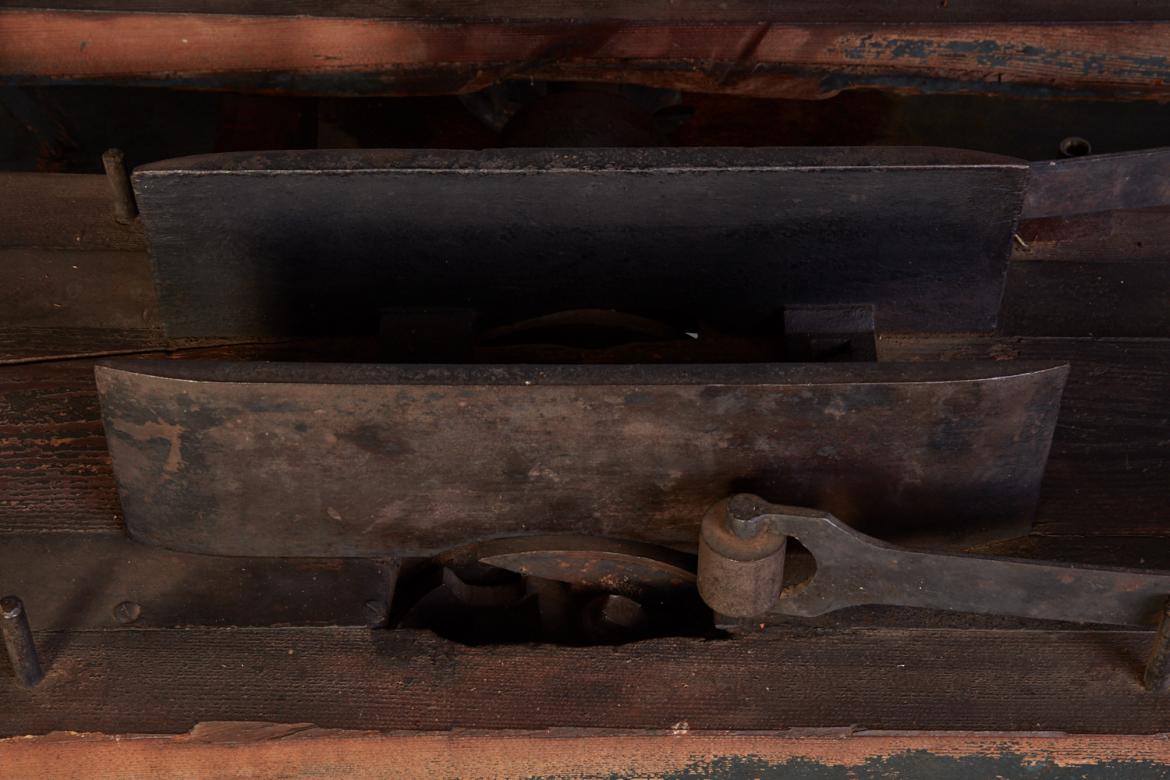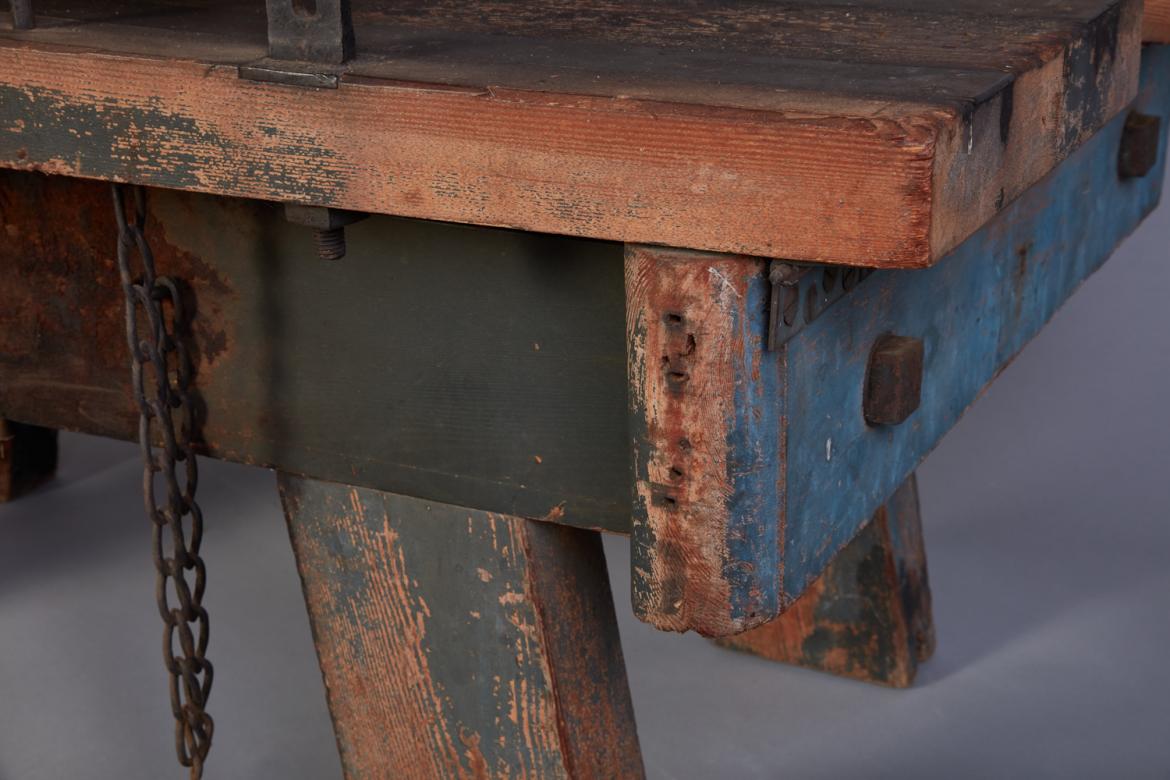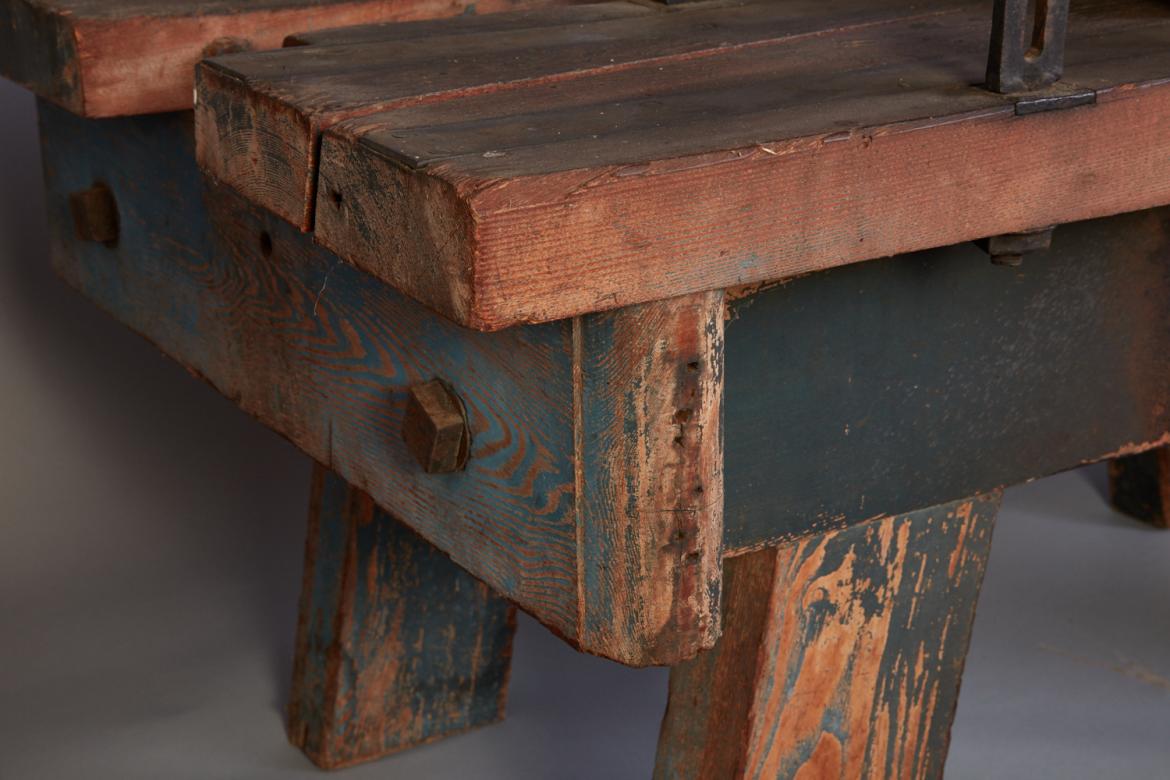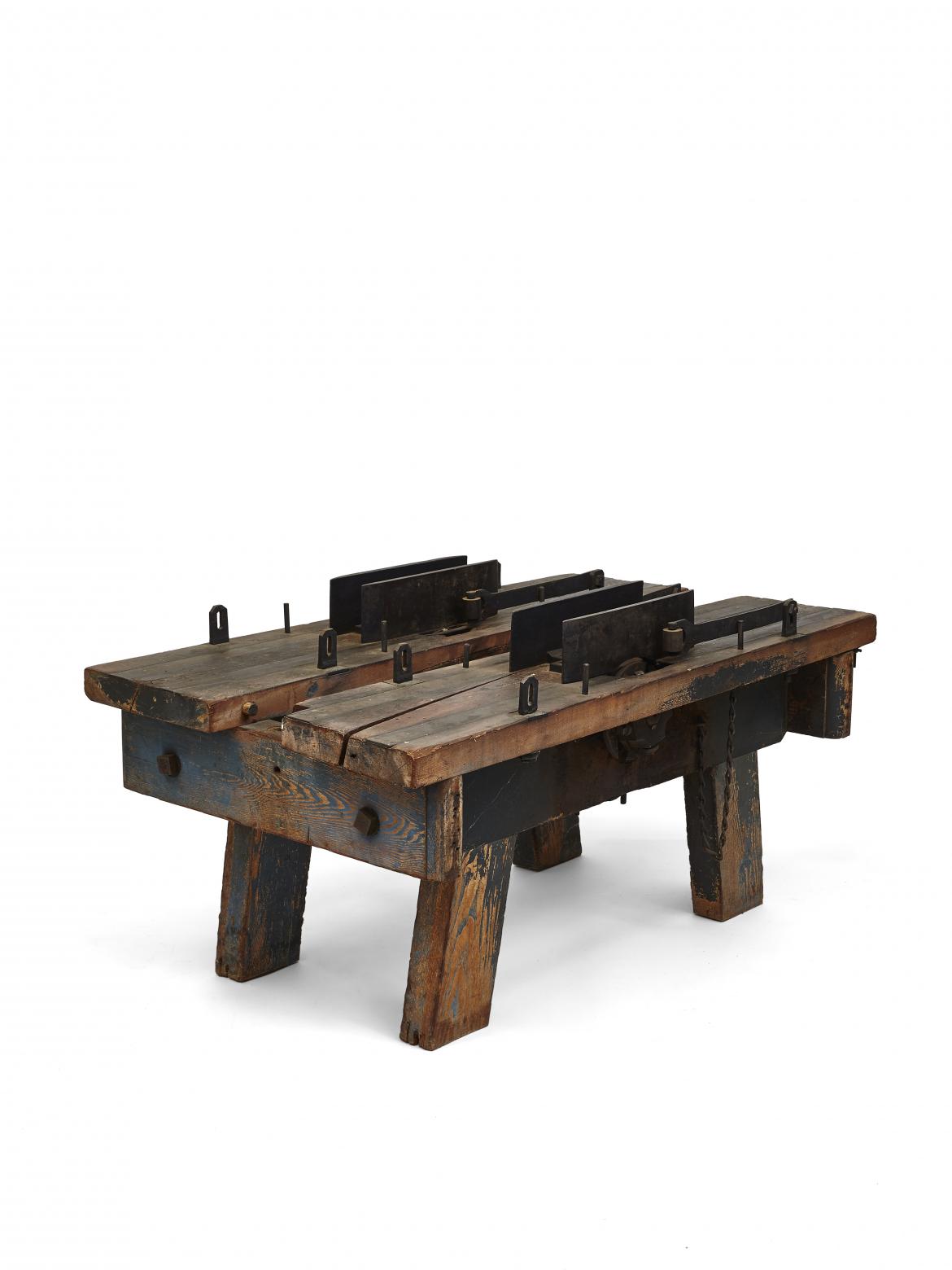Machine, Tongue and Groove
Tongue-and-groove machine used at Canterbury, NH
1835-1865
Description
Water-powered tongue and groove machine. Double bed of 53 5/8" x 12 7/8 x 2 7/16" planks with drive pulley in between. Wear marks indicate pulley was connected to overhead power source. One bed for two sizes of grooves. Stock is held against inner blades by piece of iron. Painted blue.
Notes
An 1877 history of Shaker industries written by George Lomas (1839-1889) of Mount Lebanon dates the first use of a tongue-and-groove machine to 1815: "The first matching of boards and plank by machinery in this country was enacted at Mt. Lebanon, N.Y., by Henry Bennett and Amos Bishop in 1815 - they using vertical rollers to hold the lumber straight, and ropes and windlass to propel the same over circular saws - first making the groove, then the tongue. In 1828, Woodworth invented the now common and improved system." Entries in the diary of Nicholas Bennett of Mount Lebanon may refer to the invention of the tongue-and-groove machine, which primarily functioned as a device for making floor planks: "April 8, 1815 Wet weather. We started our new buz [sic] saws & it appears that they will answer to the purpose intended... April 11, 1815 Henry and I finished the buz saw works & began to joint & match floor plank for the garrett floor at the mill... April 12, 1815 Henry & F & I finished jointing and matching the floor plank." Although Bennett referred to "new buz saws," this description of the early tongue-and-groove machine would be consistent with the 1877 reference to "circular saws," reinforcing the notion that the tongue-and-groove [machine] was invented in 1815. The fact that they were able to start and finish "jointing & matching the floor plank" for the garrett floor implies they were aided by machinery, of which a planer and a tongue-and-groove machine would have been the most useful. One of the iron guiding arms of the tongue-and-groove machine is stamped "D. Lovejoy / Lowell," the mark of Daniel Lovejoy of Lowell, Massachusetts. Daniel Lovejoy worked as a plane maker in the years 1870-1871, but he was listed as a blacksmith at age 23 in the 1850 Lowell census. This indicates that this tongue-and-groove machine was made after 1850.
New Hampshire Canterbury

